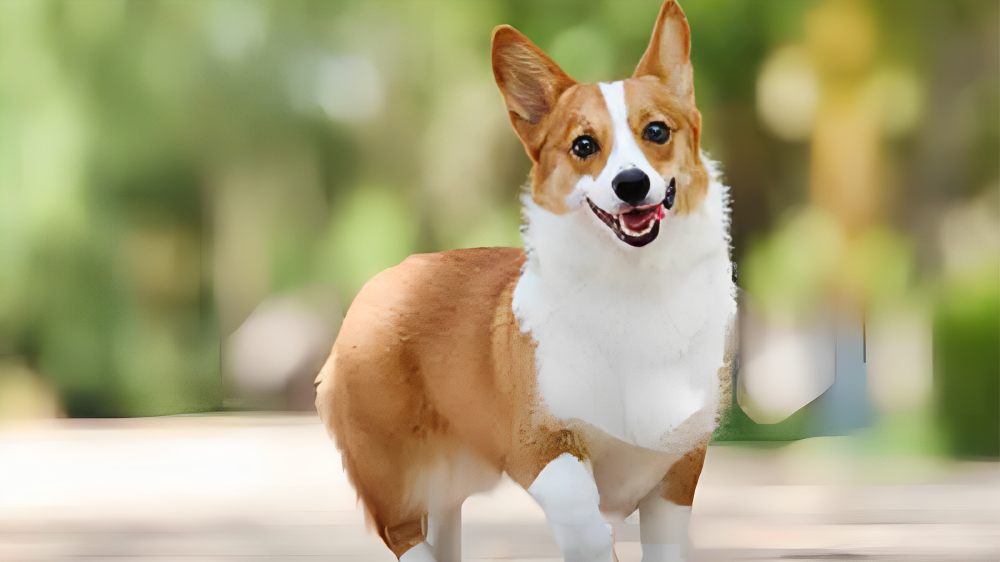Pets
Bear Meets Horse: An Unusual Wildlife Encounter
- Introduction
- Brief overview of the unusual encounter between a bear and a horse.
- The Wildlife Clash: Bear vs. Horse
- Exploring the dynamics of the encounter.
- Factors influencing such interactions.
- Habitat and Behavior Analysis
- Insights into the natural habitats of bears and horses.
- Behavioral traits that contribute to such encounters.
- Bear Dietary Patterns
- Understanding what bears typically eat.
- Analyzing the rare occurrence of a bear targeting a horse.
- Impact on Local Ecosystem
- Discussing the potential consequences for the ecosystem.
- Addressing the role of such incidents in the wildlife balance.
- Human Intervention and Conservation Efforts
- Exploring how humans can mitigate such incidents.
- Highlighting ongoing conservation efforts to protect wildlife.
- Similar Incidents Worldwide
- Providing examples of other unexpected animal encounters.
- Drawing parallels and identifying common patterns.
- Wildlife Management Strategies
- Discussing strategies to prevent such incidents.
- The role of wildlife management in preserving biodiversity.
- Public Awareness and Education
- Emphasizing the importance of educating the public.
- Encouraging responsible behavior in wildlife habitats.
- Media Coverage and Public Reaction
- Analyzing how the incident gained attention in the media.
- Public reactions and discussions surrounding the event.
- Experts’ Opinions
- Seeking insights from wildlife experts on the unusual event.
- Understanding the broader implications for wildlife management.
- Learning from Nature
- Extracting lessons on coexistence from the animal kingdom.
- Applying these lessons to human-wildlife interactions.
- The Unpredictability of Nature
- Acknowledging the inherent unpredictability of wildlife behavior.
- Encouraging a balanced perspective on rare incidents.
- Future Precautions and Preparedness
- Discussing how communities can prepare for potential wildlife encounters.
- Implementing precautionary measures for both animals and humans.
- Conclusion
- Summarizing key points.
- Reinforcing the importance of coexistence and conservation
Introduction
Deep in the woods, where species borders are porous, a recent incident has drawn attention to the improbable meeting of a bear and a horse. The habitat, behaviour, and larger implications for wildlife conservation are all examined in length in this article.Bear Meets Horse: An Unusual Wildlife Encounter bear.
The Wildlife Clash: Bear vs. Horse
Although run-ins with wildlife are regular, a bear preying on a horse is unusual. The causes of this unusual conflict need to be examined more closely in order to grasp the underlying dynamics at play here.
Habitat and Behavior Analysis
Though they belong to different orders in the animal kingdom, bears and horses often coexist in the same areas. Understanding how these interactions might take place requires looking at the animals in their natural settings and observing their habits.
Bear Dietary Patterns
Bears are omnivores that eat a wide variety of foods, from berries and insects to fish and rodents. This article delves at the question of why a bear would suddenly decide that a horse would make for a tasty meal.
Impact on Local Ecosystem
The incident affects the local environment beyond only the people directly involved. By looking at these aftereffects, we can learn more about the importance of predators in preserving nature’s delicate balance.Bear Meets Horse
Human Intervention and Conservation Efforts
Humans are vital in reducing the severity of such occurrences between animal populations. Efforts to preserve habitats and safeguard both bears and horses are discussed in this article.Bear Meets Horse
Similar Incidents Worldwide
While confrontations between bears and horses are extremely unusual, they are not unprecedented. By comparing this case to others around the world, we can learn more about the nuances of animal behaviour.
Wildlife Management Strategies
Effective wildlife management is necessary to prevent such incidents. This section delves into tactics that have been shown to reduce interspecific tensions and increase biodiversity.
Public Awareness and Education
Raising public awareness is essential in the fight to preserve biodiversity. In places where human and animal ecosystems meet, the article stresses the importance of teaching people how to behave responsibly.Bear Meets Horse
Media Coverage and Public Reaction
The public’s interest in the bear-horse event was sparked by the significant media attention it received. Examining how the media covered the story and how the people reacted helps to paint a fuller picture of what happened.
Experts’ Opinions
Expert comments on the repercussions of such events and the difficulties in managing wildlife populations can be gained by interviewing wildlife experts, who can give dimension to the tale.
Learning from Nature
Lessons about how to live in harmony with others can be learned from nature. These insights from the animal kingdom can inform our strategy for managing human-wildlife interactions.
The Unpredictability of Nature
No matter how much we try to control it, nature always ends up surprising us. Recognising this uncertainty helps one develop a more grounded perspective on wildlife behaviour and the difficulties of living with numerous species.
Future Precautions and Preparedness
Future communities should plan for the possibility of encounters with wildlife. Planning for future safety and emergency situations is essential for living in harmony with the natural world.
Conclusion
The meeting of the bear and the horse, in conclusion, is a reminder of the complexity of life and the unexpected discoveries it can yield. The fragile balance of our ecosystems depends on our ability to coexist with one another, to conserve our resources, and to gain a greater understanding of the complexity of nature.
FAQs (Frequently Asked Questions)
Are bear-horse encounters common in the wild?
No, those occurrences are extremely unusual and usually the consequence of one-off conditions.
How can communities protect themselves and wildlife from such incidents?
Wildlife conflicts can be reduced by implementing effective waste disposal, safeguarding food sources, and raising public awareness.
What role do predators like bears play in maintaining ecosystem balance?
Predators help keep ecosystems in check by regulating prey populations and stopping overgrazing.
Pets
Small Breeds: Comfort and Safety for Petite Pups

Introduction
Bringing a new furry friend into your life is a joyous occasion, especially
when you have a small breeds or a petite pup. Ensuring their comfort
and safety during walks is essential. That’s where choosing the right
harness and leash set becomes crucial. In this comprehensive guide,
we’ll walk you through the process of selecting the perfect gear for
your beloved pet.
1. Understanding the Basics
Choosing the right harness and leash set begins with understanding
the fundamentals.
Selecting the Right Size: Finding the correct size for your small breed
is the first step to comfort and safety. Measure your pup’s chest and
neck to ensure a snug fit.
2. Types of Harnesses
Harnesses come in various styles, each with its own advantages.
- Vest Harnesses: Ideal for small breeds, these distribute pressure evenly.
- Step-In Harnesses: Easy to put on and comfortable for your pet.
- No-Pull Harnesses: Great for training and preventing pulling.
3. Materials Matter
The material of the harness and leash impacts comfort and durability.
- Nylon: Lightweight and easy to clean.
- Leather: Stylish and long-lasting.
- Mesh: Breathable and perfect for hot weather.
4. Leash Length
Consider the length of the leash for both safety and freedom of movement.
- Standard Leash: 6 feet for general walks.
- Retractable Leash: Allows more freedom while maintaining control.
5. Safety Features
Safety should be a top priority when selecting a harness and leash set.
- Reflective Strips: Enhance visibility during low-light walks.
- Adjustable Straps: Ensure a secure fit.
6. Comfort for Your Pet
Prioritize your pup’s comfort to make walks enjoyable.
- Padded Harness: Reduces chafing.
- Breathable Material: Prevents overheating.
- Easy Buckles: Convenient for both you and your pet.
7. Ease of Use
Choose a harness and leash set that’s user-friendly.
- Quick Release Buckles: Easy to put on and take off.
- Adjustable Straps: Provide a customizable fit.
8. Cleaning and Maintenance
Keeping your pet’s gear clean is essential for their health.
- Machine Washable: Convenience at its best.
- Leather Care: Requires regular maintenance.
9. Matching Style
Let your pet’s personality shine with a matching harness and leash set.
- Various Colors and Patterns: Express your pet’s unique style.
10. FAQs
How do I measure my small breed for the right harness size?
Start by measuring your pup’s chest and neck. Use these measurements
to find the appropriate size on the product’s sizing chart.
Can I use a retractable leash for small breeds?
Yes, a retractable leash can be used for small breeds. However, it’s crucial
to maintain control and ensure your pet’s safety.
Are vest harnesses comfortable for petite pups?
Vest harnesses are often very comfortable for small breeds as they
distribute pressure evenly.
Should I choose a nylon or leather harness?
The choice between nylon and leather depends on your preferences.
Nylon is lightweight and easy to clean, while leather is stylish and
durable.
How do I clean and maintain my pet’s harness and leash set?
Follow the manufacturer’s instructions for cleaning and maintenance.
Most nylon harnesses are machine washable, while leather harnesses
require special care.
Can I leave the harness on my pet all the time?
It’s not recommended to leave the harness on your pet at all times
Remove it when they are not on a walk to ensure their comfort.
Conclusion
Choosing the right harness and leash set for your small breed or
petite pup is essential for their comfort and safety during walks.
By considering factors like size, style, materials, and safety
features, you can make an informed choice that will enhance
your pet’s walking experience. Invest in quality gear, and
you’ll enjoy countless enjoyable walks together.
-

 Education6 months ago
Education6 months agoUTI Blackboard: Navigating the Future of Online Learning
-

 Health9 months ago
Health9 months agoNow Foods Prostate Health Support – 180 Softgels KSA: Comprehensive Review and Benefits
-

 News6 months ago
News6 months agoOutline for the Article on “λιβαισ”
-

 Technology5 months ago
Technology5 months agoUnlocking the Potential of Innocams: A Comprehensive Guide
-

 Fashion8 months ago
Fashion8 months agoAll About VIP Nails
-

 Food5 months ago
Food5 months agoNoodlemagazine Guide: Unveiling the Culinary Delight
-

 Business6 months ago
Business6 months agoGuide to Boiler Steelvirgamet.com
-

 Food6 months ago
Food6 months ago18-Year-Old Tiana’s Sweet Fresh Cookies: A Sweet Symphony of Flavor and Tradition

